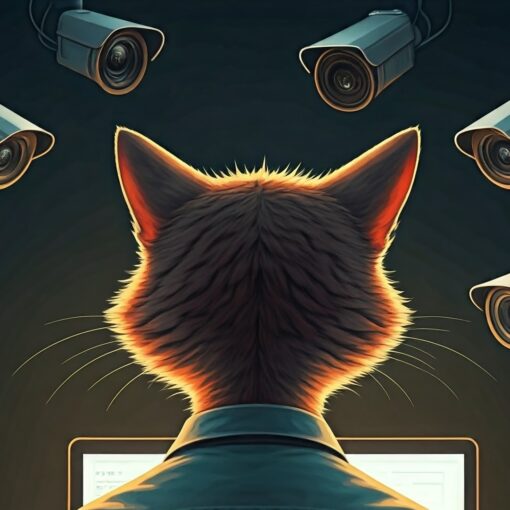Goal Setting, the Educator Way
“There is no time like the present.
A thousand unforeseen circumstances may interrupt you at a future time.”
–John Trusler, 1760
I’m not one for New Year’s resolutions, per se, but I do set goals for myself pretty regularly. And as a teacher and administrator, my colleagues and I wrote school goals for September–our January 1– that defined each year ahead.
New Year’s resolutions often center on personal wellness, finding meaningful work, and improving relationships. Our goals for students have much the same focus, only the stakes are typically higher than me dropping a few pounds: the success of thousands of students. We can’t just wing it every year.
An analysis of data from over 98 million people found that most give up on New Year’s resolutions by January 19 (Best, 2020). One reason cited: the lack of a plan for making them stick. I use some of the educator’s goal-setting process (below) in my personal life. I think you’ll find it relatable, whether for a December 31 promise to yourself or a midsummer goal for the new school year.
Seven Steps for Setting Goals That I Learned in School
At each step, we ask ourselves or each other an essential question.
1. Identify what’s most important.
What makes this goal worthy of our energy? There are a variety of reasons why we make New Year’s resolutions. The ones that motivate us the most are the most personal. While school goals have to address state mandates, those based solely on compliance are least likely to spark positive change. Educators focus at least as much on student needs, like careers, college, and personal growth.
2. Dig up the past.
What’s our history of success or failure? Most resolution makers probably don’t keep folders of information on their past efforts. Schools keep hoards of data on student performance and program implementations. Understanding previous behaviors and results can tell us which habits, strategies, and outcomes to avoid and which to build on.
3. Begin with the end in mind.
What does success look like? Just saying “I want to be more fit” is a great start, but how will you know when you’ve arrived? Better to define “fit” more specifically– say, being able to run a 5K or lower your blood pressure to safer levels. A goal is like a trip destination. You’re going to want to be more specific than “Let’s go to a city in New York.” An example from one of my recent education efforts was to increase and diversify enrollment by at least 25% in the 2nd year of a new Digital Design career education pathway.
4. Break down goals into smaller pieces (aka objectives).
What will we have to do to reach this goal? Goals and resolutions can be daunting in their scope, particularly on the first try. I am always in awe seeing a new house get built, but have come to understand the stages and skills required. Objectives are like milestones, with associated timelines, accountability, and measurements (what, when, who, and how) built in. In fact, listening to educators, you might think you were in a court of law. “What evidence can we provide that proves this actually happened?” is a common refrain.
5. Ascertain if the actions required are doable and sustainable.
Can we continue working like this indefinitely? There’s a good reason extreme diets, workouts, and abstinence don’t work; if they make us miserable, they will neither last nor be repeatable. Rarely does worthwhile change require a 180-degree turn. A large-scale experiment on New Year’s resolutions found that approach-oriented goals are more successful than avoidance-oriented goals (Oscarsson, 2020). Goals should be ambitious yet grounded in realistic expectations, especially now, with mental health at a premium. And it’s almost always better to have shared goals; they’re like having a reliable workout partner to keep you focused and pumped up.
6. Monitor progress often and course adjust as necessary.
How are we doing? Did we make any wrong turns? Seldom do we get a plan exactly right from the get-go. Be vigilant and honest about what’s working and what’s not. Commitment doesn’t mean sticking with something when there is no evidence to support staying on the same path.
7. Reflect on results.
What happened? How did we do? Would I do anything different? I still often encounter someone who will say at the end of a project, “Well, that did/didn’t go well,” and then everyone turns their attention to the next project. The debrief, introspection, and reflection ensure that time and energy weren’t wasted. What worked, what didn’t, and why? Whether we reached our goal or not, this time, that vital feedback makes us better at driving through these seven steps, the next time.
A resolution need not be a revolution.
Change is surely not always easy. Constant change, particularly when it’s unpredictable or not by choice, can be debilitating. Done well, resolutions and goal setting make change manageable. They give us structure, direction, and an opportunity to learn.
Michael Fullan, the guru of organizational change, wrote (in the midst of the pandemic!) that “Prolonged ambiguity creates a tangible opportunity to make positive change happen.” Even now, today, we have a chance to help ourselves and help others.
As the right reverend Trusler implied in the quote opening this post, today is as good a time as any to set a new goal.
⚙ Dr. Marc
If you feel that someone in your professional network, neighborhood, the next classroom or cubicle would benefit from engaging in topics like the ones in these posts, you are encouraged to share this post.
©2021 Marc Natanagara, Ed.D. All rights reserved. Reprinted with permission.
This article and other resources available at authenticlearningllc.com
When duplicating this post in any form, please be sure to include the attribution in italics above.
When duplicating an infographic, be sure to include attributions within the graphic.
Image of goalposts from https://www.istockphoto.com/photos/stadium-lights-daytime
Roadmap image from https://www.dreamstime.com/photos-images/paper-road-map-background.html
References
Best, S. (January 2, 2020). Daily Mirror UK. New year’s resolutions. Accessed at https://www.mirror.co.uk/science/day-people-most-likely-give-21199904
Fullan, M. (February, 2021). The right drivers for whole system success. Accessed at https://michaelfullan.ca/wp-content/uploads/2021/03/Fullan-CSE-Leading-Education-Series-01-2021R2-compressed.pdf
Hayden, J. (January 3, 2020). How to create new habits that actually stick. Inc.com. Accessed at https://www.inc.com/jeff-haden/a-study-of-800-million-activities-predicts-most-new-years-resolutions-will-be-abandoned-on-january-19-how-you-cancreate-new-habits-that-actually-stick.html
Oscarsson, M. et al. (December 9, 2020). A large-scale experiment on New Year’s resolutions: Approach-oriented goals are more successful than avoidance-oriented goals. Accessed at https://doi.org/10.1371/journal.pone.0234097






One thought on “Resolutions for a New Year”
I can not tell you how much I miss our daily morning talks. I learned so much from you without even knowing it. Your door was always open and extended into the hallway and our classrooms. Time was never a question and the goals above always at the core of what we learned from you to do.
A quality all good teachers possess. Thank you for always being there!